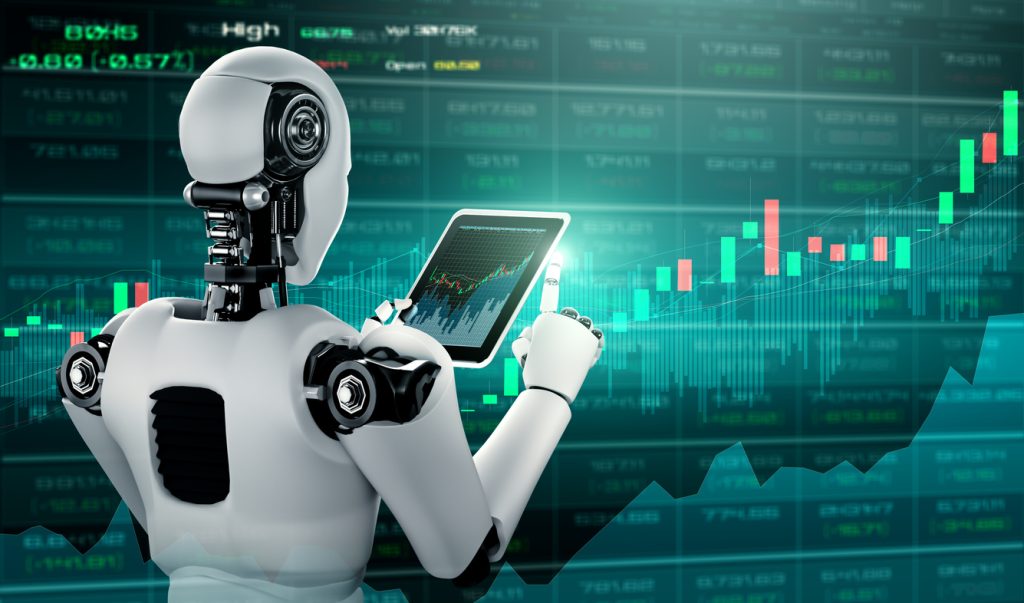Process automation has long been a goal for businesses aiming to streamline workflows, reduce costs, and enhance efficiency. Two key technologies that have revolutionized this space are Robotic Process Automation (RPA) and Artificial Intelligence (AI).
Both RPA and AI play significant roles in automating tasks, but they differ in complexity and capability. RPA is ideal for automating rule-based, repetitive tasks, while AI takes automation further by enabling machines to learn, reason, and make decisions. In this article, we’ll explore the key differences between RPA and AI, how AI is enhancing process automation, and why businesses need to consider AI as the next step in their automation journey.
What is Robotic Process Automation (RPA)?

RPA is a technology that uses software bots to mimic human actions in executing repetitive, rule-based tasks. These tasks are typically structured, involving clear rules and procedures. For example, an RPA bot can log into a system, copy data from one application to another, fill out forms, process transactions, or respond to emails. RPA doesn’t require extensive coding knowledge, making it a popular solution for automating mundane tasks across various industries like finance, healthcare, and customer service.
RPA’s strength lies in its ability to automate repetitive tasks quickly and accurately. By mimicking human actions, RPA allows businesses to free up their employees from routine tasks, enabling them to focus on more value-driven activities. However, RPA has its limitations—it can only handle tasks that follow explicit rules and doesn’t adapt well to unstructured data or tasks that require decision-making or cognitive processing.
What is Artificial Intelligence (AI)?

On the other hand, AI refers to the simulation of human intelligence in machines. AI can handle tasks that require reasoning, learning, problem-solving, and decision-making. It uses algorithms and data to recognize patterns, make predictions, and continuously improve its performance. AI encompasses several subfields, including machine learning (ML), natural language processing (NLP), and computer vision, all of which help machines process information and make intelligent decisions.
Unlike RPA, AI doesn’t simply follow a set of rules—it learns from data and experiences. This allows AI-powered systems to handle more complex tasks that involve unstructured data (such as images, voice, and free-text documents) and make decisions based on that data. AI can automate previously impossible processes for traditional automation tools, driving process automation to the next level.
Key Differences Between RPA and AI
While both RPA and AI are valuable in automating business processes, they differ in several key areas:
Task Complexity
RPA is best suited for simple, rule-based tasks that follow a structured workflow. It can automate activities like data entry, report generation, and invoice processing. AI, on the other hand, can handle more complex tasks involving unstructured data, decision-making, and predictive analysis. AI-powered systems can adapt to new scenarios without needing explicit instructions.
Data Processing
RPA works well with structured data—information organized in a specific format like spreadsheets or databases. AI can work with both structured and unstructured data, such as emails, social media posts, or voice recordings. By analyzing this data, AI can make informed decisions, predict trends, and provide insights.
Learning Capabilities
RPA follows predefined rules and cannot learn or improve over time. Once an RPA bot is deployed, it continues to follow the same instructions unless manually updated. AI, however, can learn from past interactions and data, improving its performance over time through machine learning. This ability to adapt makes AI a powerful tool for continuous improvement.
Decision-Making
RPA lacks decision-making abilities; it executes tasks exactly as programmed. AI, with its cognitive capabilities, can analyze data, identify patterns, and make decisions based on learned experiences. This allows AI to automate more nuanced tasks that involve judgment and interpretation.
Scalability
While RPA is scalable for rule-based tasks, AI offers greater scalability for more complex operations. AI-powered systems can handle large volumes of data and automate more sophisticated processes across an organization.
How AI Enhances Process Automation
AI takes process automation beyond RPA by adding cognitive capabilities to automation workflows. Here’s how AI enhances automation:
Handling Unstructured Data
One of the most significant advantages of AI is its ability to process unstructured data, which makes up the majority of the data generated by businesses today. Whether it’s analyzing customer feedback, interpreting contracts, or recognizing patterns in images, AI can automate tasks that RPA cannot handle. For example, AI-powered natural language processing (NLP) can be used to read and understand emails, while computer vision can analyze images for quality control in manufacturing.
Decision-Making and Prediction
AI can automate tasks that require decision-making and predictive analysis. For example, in finance, AI can analyze past transactions to detect fraudulent activities and prevent potential risks. In customer service, AI can predict customer behavior based on past interactions and offer personalized solutions. AI can also be used in predictive maintenance, where it analyzes data from machines to predict when a failure might occur, allowing businesses to prevent downtime.
Intelligent Automation
The combination of AI and RPA leads to Intelligent Process Automation (IPA), which enables end-to-end automation of complex workflows. With IPA, AI can analyze data, make decisions, and trigger RPA bots to execute tasks based on those decisions. This blend of AI’s cognitive capabilities and RPA’s task execution creates a more comprehensive automation solution. For instance, in the insurance industry, AI can analyze claim documents to assess validity, and RPA can then automate the process of approving or rejecting claims.
Continuous Improvement
Since AI systems can learn and improve over time, they can continuously optimize processes. This leads to more efficient operations, better decision-making, and higher ROI. For example, an AI-driven chatbot can learn from previous interactions and improve its responses to customer inquiries, making customer service more efficient.
Why AI is the Future of Process Automation

While RPA provides immediate value by automating repetitive tasks, AI brings long-term benefits by automating more complex processes and enabling systems to learn, adapt, and improve. As businesses deal with increasing amounts of unstructured data and demand more intelligent, responsive systems, AI will play an essential role in process automation.
The future of automation lies in Intelligent Process Automation, where AI and RPA work together to create smarter, more flexible systems that can handle a wide variety of tasks across different industries. As AI technologies continue to evolve, businesses will increasingly rely on AI-driven automation to drive innovation, efficiency, and competitive advantage.
Conclusion
RPA and AI are both powerful tools for process automation, but they serve different purposes. RPA excels at automating simple, rule-based tasks, while AI goes further by handling complex tasks, making decisions, and learning from data. As businesses strive for greater efficiency and scalability, integrating AI into their automation strategies will be essential for staying ahead in a competitive landscape.
By incorporating AI into process automation, businesses can automate more processes, handle unstructured data, and make smarter, faster decisions. The combination of RPA and AI—Intelligent Process Automation (IPA)—is the future of business operations, offering the flexibility and intelligence needed to thrive in an increasingly data-driven world. With the help of our team of expert developers, your organization can achieve significant efficiency gains, cost savings, and overall business growth. Let us help you unlock the full potential of ProAI.
